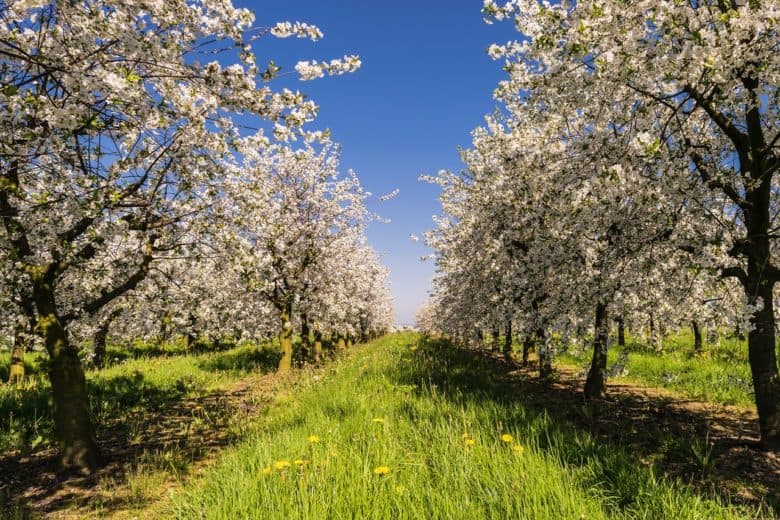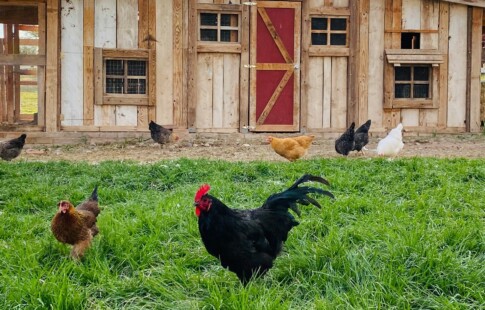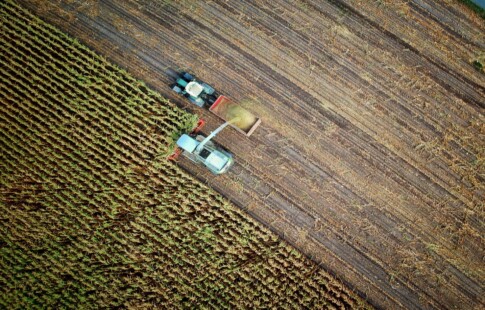
Green Technology Assisting Agroforestry
We are reader-supported. When you buy through links on our site, we may earn affiliate commission.
You may have heard of a practice called agroforestry, and even if you haven’t, the concept is probably familiar to you. It involves planting trees and shrubs among crops to facilitate benefits such as erosion protection and increased biodiversity. Some sources also discuss regeneration in conjunction with agroforestry. You can think of agroforestry as a potential component of regeneration, since the latter encompass purposeful practices to improve soil health and sequester carbon, among other things. As you’ll soon see, green technology assisting agroforestry has a huge impact.
Agrivoltaics Could Achieve Similar Goals to Agroforestry
One of the techniques associated with technology assisting agroforestry is to grow crops under tree canopies to give them more shade. That’s a particularly popular approach in tropical climates. However, there’s an emerging way that farmers might achieve the same shade-related goals while applying green technology: growing crops under solar panels. Research indicates that lettuces, chards and kale are particularly well-suited to this method, known as agrivoltaics. Trials show that those crops have larger or longer leaves when grown under solar panels.
Also, agrivoltaics can help the solar panels, too. In places where the temperature is more than 75 degrees in the sun, solar panel performance can decrease due to getting too hot. However, water evaporation from the crops underneath could have a cooling effect on the panels. People can save money while living on a farm or homestead in many ways. For example, opting for an energy-saving appliance over a conventional one could lead to a 9-25% savings in operating costs depending on usage and the type selected. But, installing solar panels is particularly appealing since individuals can sell excess energy back to the grid to generate income. The preliminary research about agrivoltaics suggests that people do not have to choose between installing solar panels and embracing agroforestry. Relying on energy from the sun can support agroforestry goals.
Drones Are Speeding up Tree-Replanting Efforts
People don’t always immediately think of drones as being under the umbrella of green technology, but they certainly can be when used in the right ways. For example, drones can collect information about the atmosphere or monitor the functionality of wind turbines. Also, a project in Myanmar harnesses agroforestry technology by using drones to plant mangroves. That approach works to get new trees into the ground faster than humans could alone. The goal is to restore approximately 350,000 hectares of land by planting one billion trees. It’s easy to see what a daunting task that is without technological assistance. The Myanmar team uses drones to distribute “seed missiles.”
The vehicles first fly over the land to map it and determine the best planting locations. Analysts frequently assert that although agricultural technology may pose short-term employment challenges, it will bring long-term benefits by allowing farmers to spend their time doing more rewarding or lucrative responsibilities. In the case of using drones to plant trees, the aim is too far out of reach without using equipment to help. Humans will not be out of the picture even if the drones work as well as the researchers hope they will, though. Some of the seed pods are too large to fit inside the drones. Moreover, the group working on this approach recognizes that the care of the mangrove forests is a crucial part of community building for area residents. They must continue to play a role in the future maintenance of the newly planted trees.
Data Models Can Help Predict the Best Methods to Promote Climate Change Resilience
One of the effects of climate change that’s already apparent is drought. In some areas where drought is particularly likely, farmers compensate by becoming part of a solar revolution and installing panels on their property. They realize that income from the panels could help them cope with lost profits brought about by environmental conditions that are not favorable to a prosperous growing season. Researchers are using technology in other ways to figure out the best ways to help nature sustain the effects of climate change, too. In one example, Jaime Yazzie applied data models and a simulator to see how different climate-related events affect forests.
While working on her thesis at Northern Arizona University, Yazzie’s adviser asked her to think about which trees she wanted to save during the impending climate crisis. Yazzie was taken aback by the question because she sees all trees as part of a single big family. She wanted to combine that mindset, along with her Native American heritage, to encourage people to look differently at climate change and how it impacts forests. The models showed that all climate scenarios would have a significant negative impact on forests, but Yazzie’s research encourages adaptive management rather than complacency. Climate change is an ongoing issue for agricultural professionals.
However, anyone interested in agroforestry might apply data on a smaller scale to see which techniques could have the most payoffs for climate change mitigation. The regeneration described earlier applies to agroforestry when people plant trees and shrubs to mimic natural systems. Scientists are hopeful that technology assisting agroforestry could help the planet withstand damage caused by climate change. It could also feed the world since farmers in places such as Brazil and Zambia have boosted yields by increasing biodiversity through agroforestry.
Adopting Technology Assisting Agroforestry Could Reap Rewards
These examples are only the tip of the iceberg, but hopefully, they help you see why agroforestry makes sense in today’s society. It’s essential to plan for the planet’s future now, and agroforestry could help that happen.
Share on
Like what you read? Join other Environment.co readers!
Get the latest updates on our planet by subscribing to the Environment.co newsletter!
About the author
Jane Marsh
Starting from an early age, Jane Marsh loved all animals and became a budding environmentalist. Now, Jane works as the Editor-in-Chief of Environment.co where she covers topics related to climate policy, renewable energy, the food industry, and more.





